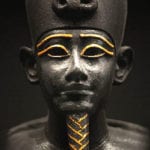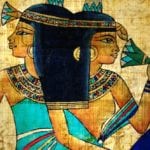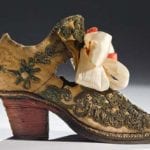 Music
Music  Music
Music  History
History 10 Less Than Jolly Events That Occurred on December 25
 Weird Stuff
Weird Stuff 10 Funny Ways That Researchers Overthink Christmas
 Politics
Politics 10 Political Scandals That Sent Crowds Into the Streets
 Weird Stuff
Weird Stuff Ten Bizarre Facts About The Doge Meme
 Our World
Our World 10 Ways Your Christmas Tree Is More Lit Than You Think
 Movies and TV
Movies and TV The 10 Coolest Stars to Set Sail on The Love Boat
 History
History 10 Things You Didn’t Know About the American National Anthem
 Technology
Technology Top 10 Everyday Tech Buzzwords That Hide a Darker Past
 Humans
Humans 10 Everyday Human Behaviors That Are Actually Survival Instincts
 Music
Music 10 Surprising Origin Stories of Your Favorite Holiday Songs
 History
History 10 Less Than Jolly Events That Occurred on December 25
 Weird Stuff
Weird Stuff 10 Funny Ways That Researchers Overthink Christmas
Who's Behind Listverse?

Jamie Frater
Head Editor
Jamie founded Listverse due to an insatiable desire to share fascinating, obscure, and bizarre facts. He has been a guest speaker on numerous national radio and television stations and is a five time published author.
More About Us Politics
Politics 10 Political Scandals That Sent Crowds Into the Streets
 Weird Stuff
Weird Stuff Ten Bizarre Facts About The Doge Meme
 Our World
Our World 10 Ways Your Christmas Tree Is More Lit Than You Think
 Movies and TV
Movies and TV The 10 Coolest Stars to Set Sail on The Love Boat
 History
History 10 Things You Didn’t Know About the American National Anthem
 Technology
Technology Top 10 Everyday Tech Buzzwords That Hide a Darker Past
 Humans
Humans 10 Everyday Human Behaviors That Are Actually Survival Instincts
10 Very Modern Controversies Surrounding Ancient Egypt
Ancient Egypt remains one of the most astonishing and fascinating civilizations of the ancient world. But that doesn’t mean it’s free of modern controversies. In fact, Ancient Egypt is probably associated with more contemporary kerfuffles that any other early civilization.
10The Mummified Animals Scandal
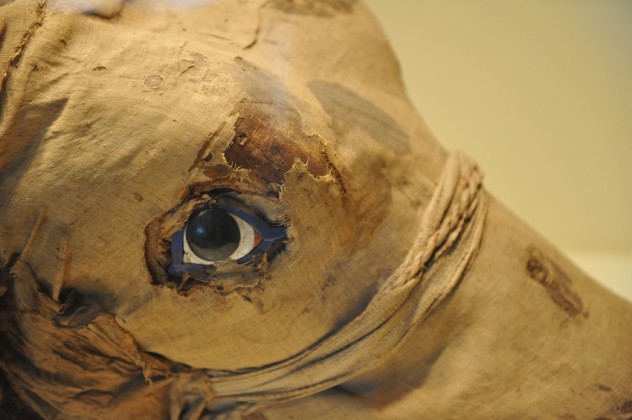
Mummified animals were a big deal in Ancient Egypt, serving as offerings to the gods. In fact, there was a whole industry centered around rearing dogs, cats, crocodiles, and monkeys for mummification. Once suitably wrapped and preserved, the animal corpses would fetch a hefty price from pious Egyptians wanting to win favor in the afterlife. But in 2015, the University of Manchester and Manchester Museum unearthed a scandal when they began X-raying the animal mummies in their possession and found that many of the mummies didn’t actually contain an animal!
Researchers now think that demand for mummies outstripped the supply of sacred animals, even though they were bred on an industrial scale. As a result, only a third of the mummies had a full animal inside the wrapping. Another third contained some animal matter, while the remaining third were simply stuffed with mud, sticks, feathers, eggshells, and other materials associated with the animal the mummy was supposed to represent.
Naturally, the discovery led to speculation that the Egyptian priests were ripping off their customers by selling them a lump of mud wrapped in the shape of a cat or croc. However, the University of Manchester’s Lidija McKnight cautioned that we don’t have enough evidence to show it was fraud. In an interview with the BBC, McKnight explained that it was relatively likely that the Egyptians knew exactly what they were buying, since the mummies weren’t thrown together at random, but contained “materials associated with the animals during their lifetime—so nest material or eggshells.”
9The Sekhemka Statue Sale
In 1850, the Marquis of Northampton returned from a trip to Egypt with one of the most remarkable Ancient Egyptian statues ever discovered. Perfectly intact, the statue depicts a royal scribe named Sekhemka, who lived at some point between 2,400 and 2,300 BC. A descendant of the Marquis later gave the statue to the Northampton Museum, where it occupied pride of place as a magnificent example of Fifth Dynasty artwork. But in 2012, the local council carried out an insurance assessment, which drew attention to the fact that the statue was a potential gold mine. Two years later, the council sold it to an unnamed private collector for around $20 million. The exceptional statue may never be seen in public again.
The shocking sale prompted an international outcry, with the Egyptian ambassador calling it “an abuse to Egyptian archaeology.” Egyptologists warned that the statue was safeguarded by conservation laws while in a museum but would have no such protections under private ownership. The sale was considered so outrageous that the English Arts Council stripped the Northampton Museum of its official accreditation, making it ineligible to receive
grants and funding.
In response to the furor, the UK government imposed an export ban, preventing the statue from leaving the country. The ban was recently extended until March 2016 while an Egyptian group tries to crowdfund $25 million to buy the statue and return it to Egypt.
8The Qurna Evictions

On the west bank of the Nile, opposite Luxor and just south of the Valley of the Kings, lies an ancient burial site known as the Valley of the Nobles. The necropolis contains the elaborate tombs of high-ranking Ancient Egyptians, including close advisers of the pharaohs buried in the Valley of Kings. Naturally, archaeologists have long been desperate to excavate the site. There was just one problem—there was an inhabited village sitting right on top of it.
The conflict between the Egyptian government and the villagers of Old Qurna, whose mud-brick homes sat amid the tombs, began before Egypt’s independence. The government wanted to explore the tombs and protect them from water damage. It was also suspected that the villagers were plundering the tombs and discreetly selling off valuable artifacts. In 1948, the government built a “New Qurna” for the villagers, but they refused to move, saying that there was no way for them to make a living in the new settlement, which was located away from their farms and the tourist trade.
The government has been trying to get the villagers to relocate ever since. A 1990s attempt at forcible eviction failed after four villagers died, triggering a wave of bad publicity. But officials remained determined to remove the villagers, who were accused of damaging the tombs by keeping animals in them. In the 2000s, the government built a second “New Qurna” a short distance away. The villagers were told they could take one of the new houses or be given nothing when Old Qurna was demolished. The bulldozers arrived in 2006.
Archaeologists have since made significant discoveries in Qurna. However, the eviction remains a matter of controversy, with the villagers protesting that the new houses are tiny and too far away from the tourist trade for them to make a living.
7The Orion Correlation Theory
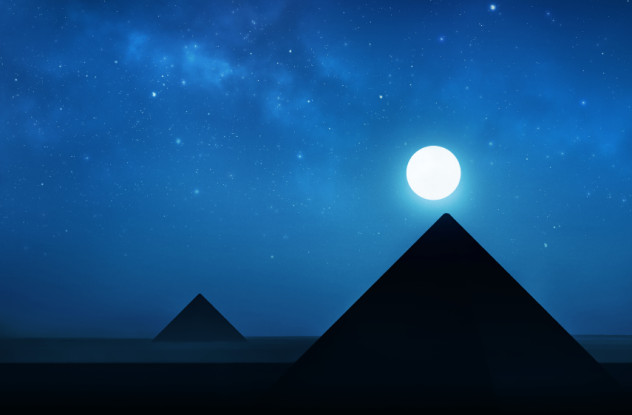
The Great Pyramids of Giza have fascinated mankind for millennia, prompting countless theories as to how and why the Egyptians created such unusual structures. Of course, some of those theories are more plausible than others, and among the most controversial is Belgian engineer Robert Bauval’s belief that the pyramids were intended to reflect the stars of the Orion constellation.
First published in 1994, Bauval’s theory argues that the layout of the three pyramids perfectly matches the three stars of Orion’s Belt. Other Fourth Dynasty pyramids correspond to other stars in Orion, while the nearby Nile represents the Milky Way. It’s widely accepted that the Egyptians genuinely did employ astronomy in designing the pyramids (among other things, the pyramids are exactly aligned with the four points of the compass, which the Egyptians could only have done in reference to the stars). As a result, Bauval’s theory attracted a great deal of interest. However, experts soon began to pick holes in the theory.
For starters, the Giza pyramids don’t actually match up perfectly with Orion’s Belt. Bauval solved this problem by suggesting that the pyramids might have been built around 10,500 BC, when Orion’s Belt would have lined up better. This is 8,000 years earlier than the generally accepted date for the pyramids’ construction. And even in 10,500 BC, Orion’s Belt would have curved at an angle of almost 50 degrees, whereas the three pyramids curved at an angle of 38 degrees. Most damningly, the line of the pyramids bends to the north, whereas Orion’s Belt bends to the south, meaning that Bauval had to flip one to achieve a perfect overlay. Nonetheless, Bauval’s work was hugely popular and has continued to influence public perception of Ancient Egypt.
6The Alien Authority Rumor
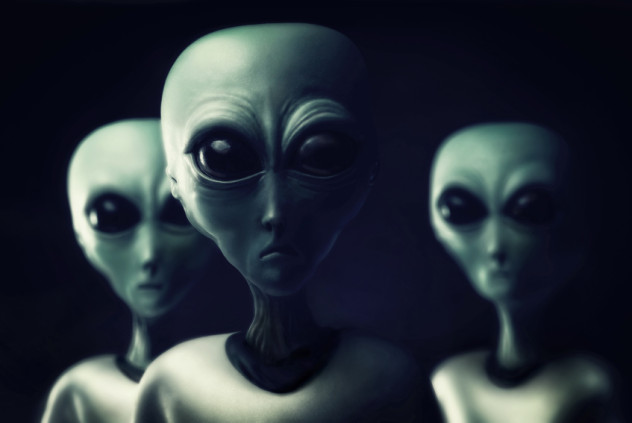
Of course, Bauval’s Orion theory isn’t the only time a link has been made between the pyramids and outer space. For years, various conspiracy theorists and pseudoscientists have argued that such spectacular monuments could only have been created with alien involvement. So a story that swept the web in November 2010 headlined “Egyptian Archaeologist Admits Pyramids Contain UFO Technology” created an uproar.
According to the story, Dr. Ala Shaheen, head of the archaeology department at the University of Cairo, sensationally told a conference audience that “there might be truth to the theory that aliens helped the Ancient Egyptians build the oldest of pyramids, the Pyramids of Giza.” He added that “there is something inside the pyramid that is not of this world” and then refused to elaborate further.
It was an intriguing story, with just one problem—Dr. Shaheen denied ever saying “such stupid words and ideas.” According to researcher Andrew Collins, the story was made up by a group of “new age fundamentalists, who promote a brutish and somewhat unhealthy agenda” involving a crystal hidden inside the Great Pyramid which can “activate a global grid of pyramids that will defend the human race from destruction by extraterrestrial forces come December 21, 2012.” Fortunately, that date passed without aliens or pyramid-lasers, but it’s clear the belief that aliens built the pyramids isn’t going to die down any time soon.
5The Rosetta Stone Row
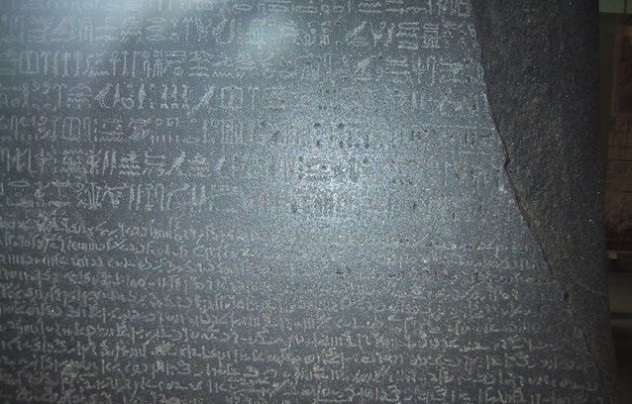
The British Museum is one of the most famous institutions in the world, home to spectacular artifacts from across the globe. Unfortunately, the rest of the globe isn’t too happy about that fact, with many countries claiming that their heritage was stolen during the colonial era. One of the most controversial treasures in the museum’s trove is the famous Rosetta Stone of Ancient Egypt.
The ability to read Egyptian hieroglyphics was lost following the fall of the Roman Empire, leaving early historians perplexed by the strange symbols. The breakthrough came during Napoleon’s invasion of Egypt in 1799, when an engineer discovered the stone near the town of Rosetta. The granodiorite stone tablet was inscribed with the same text in classical Greek and hieroglyphics. Since French archaeologists still knew how to speak classical Greek, it was possible for them to decipher hieroglyphs for the first time. This remains the most important breakthrough in the modern study of Ancient Egypt.
It’s not completely clear how the British got their hands on the Rosetta Stone, but they probably seized it after defeating the French in Egypt. It’s been in the British Museum ever since. But in recent years, the Egyptian government has argued that it should be returned. The hubbub began back in July 2003, when eminent archaeologist Zahi Hawass, one of Egypt’s most popular figures, embarked on an international campaign to demand the stone’s return, saying that its continued presence in the British Museum was a “shame for the country.” Dr. Hawass lost his government position following the 2011 Egyptian uprising, but the pressure to return the Rosetta Stone remains.
4The Damaged Cartouche Conspiracy
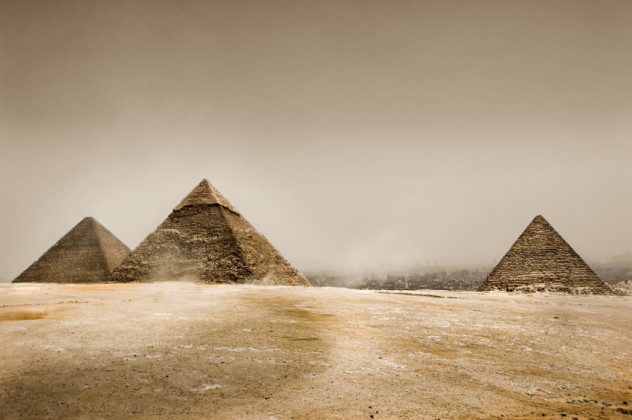
Meanwhile, Zahi Hawass’s fall from grace after the overthrow of the Mubarak government saw him embroiled in one of the strangest scandals in modern Egyptology. In 2013, three Germans claiming to be archaeologists managed to obtain permission to enter the Great Pyramid of Giza. In reality, none of the Germans had any qualifications in archaeology. They were conspiracy theorists who believed that the pyramids were much older than traditionally thought, having been built as “power stations” by the inhabitants of Atlantis.
Once inside the pyramid, the Germans scraped off part of the “cartouche of Khufu,” an ancient piece of painted graffiti identifying the pharaoh Khufu as the builder of the pyramid. The Germans thought that the cartouche was a 19th-century forgery and took the samples back to Germany for testing.
Naturally, the news that three conspiracy theorists had defaced the cartouche was greeted with outrage in Egypt. The German government seized and returned the samples (the “archaeologists” ran out of money before getting them tested), while the Egyptian government tried and convicted five officials accused of giving them access to the pyramid. However, all five officials claimed that the visible damage to the cartouche had actually occurred in 2010, when Hawass gave permission for a documentary to be filmed. For his part, Hawass insisted that the Germans had done the damage in 2013, long after he was forced out of office.
3Frankenstein Nefertiti
Nefertiti, whose name literally means “a beautiful woman has arrived,” is one of Ancient Egypt’s most famous queens, renowned for her beauty and political influence. Her image in modern times owes much to the magnificent statue of her by the ancient sculptor Thutmose. So it’s only natural that local authorities decided to erect a replica of the bust outside the Egyptian city of Samalut. There was just one problem: The replica was hideous.
In fact, the replica was almost nothing like the original—Nefertiti’s skin was greenish yellow instead of brown, her face was elongated instead of beautiful, and her eyes were closed. As soon as images of the artwork got out, they became the subject of widespread mockery in Egypt, with locals comparing it to Frankenstein’s monster, Colonel Gadhafi, and even Egyptian president Abdel Fattah el-Sisi.
The scorn was so overwhelming that embarrassed officials had the statue pulled down after just a few days. In January 2016, a new, less grotesque replica of the bust was erected in its place.
2Chinese Graffiti
Built on the site of the great old city of Thebes, the Luxor complex is home to structures more than 3,500 years old. This magnificent collection of tombs, temples, and statues has made Luxor one of Egypt’s most popular tourism destinations. So it caused outrage when a picture emerged of graffiti carved into a temple in the complex.
On May 24, 2013, Chinese blogger Shen Yuwen posted an image of an Egyptian temple with “Ding Jinhao was here” scrawled across it in Chinese graffiti, causing Egyptian and Chinese netizens alike to explode with rage. Before long, people had made it their job to search for the person responsible. Within hours, the 15-year-old who had vandalized the monument had made a full apology to the Egyptian people. His parents also profusely apologized, adding that their son had learned his lesson.
In fact, the backlash was so extensive that the Chinese Foreign Ministry eventually had to address the issue, declaring that they hoped Chinese tourists would “behave themselves” in the future. Luckily, the damage wasn’t permanent, and restoration experts successfully removed the graffiti.
1The King Tut Controversy
King Tut’s golden mask has been the most iconic image of Ancient Egypt since Howard Carter discovered Tutankhamun’s tomb in 1922. So it came as a rude shock when a BBC documentary made some surprising claims about Tutankhamun himself. According to the documentary, not only was the pharaoh club-footed and buck-toothed, but he also had enlarged breasts and “womanly hips.”
The saga began in August 2015, when the BBC aired a documentary called Tutankhamun: The Truth Uncovered. The documentary featured a virtual reconstruction of the boy-king’s face, developed using more than 2,000 computer scans of his mummy as well as genetic analysis of his extended family. The results suggested that the pharaoh suffered from a number of birth defects brought about by generations of inbreeding, shattering the beautiful image presented by his tomb. Among other things, the researchers suggested that Tut suffered from gynecomastia and epilepsy.
The documentary sparked a minor controversy in Egypt, where many experts disagreed with the overall picture presented in the documentary. In particular, many Egyptian archaeologists took issue with the claim that Tut was wide-hipped and big-breasted, since previous studies had found no evidence of that. They pointed out that artistic depictions of pharaohs often included such traits for symbolic reasons.
Zahi Hawass also suggested there wasn’t enough evidence to conclude Tut had a clubfoot, although he acknowledged that he “had 130 walking sticks and used to shoot arrows while he was sitting.” Another Egyptian archaeologist even declared that the BBC team was “looking for fame, as their results are only speculation without any archaeological or historical evidence.”
Malavika Madgula is a freelance writer. She blogs at malavika24.wordpress.com. You can also write to her on LinkedIn, Tripoto, and Twitter at @mmalavika24.



